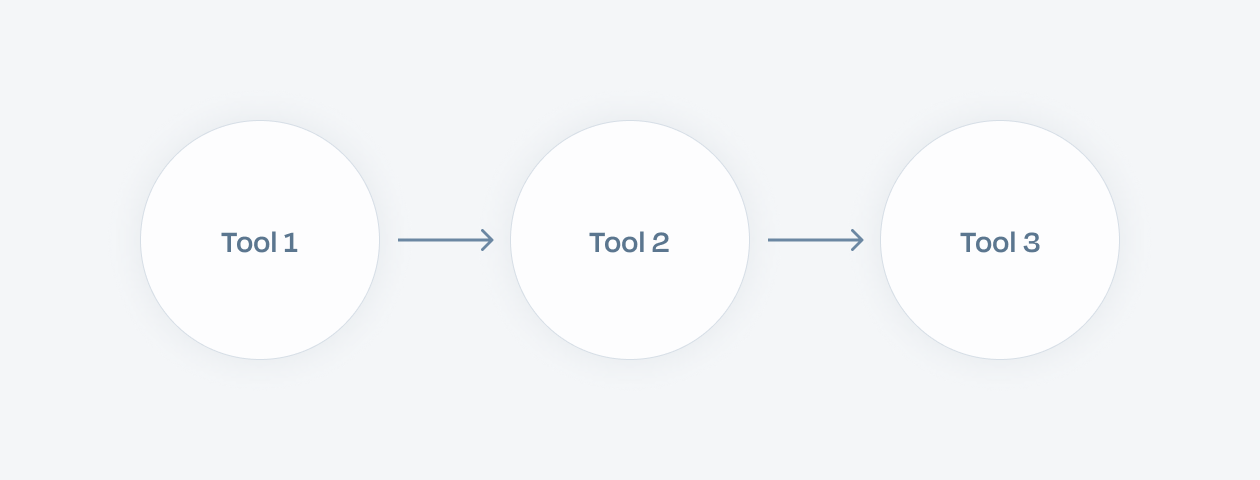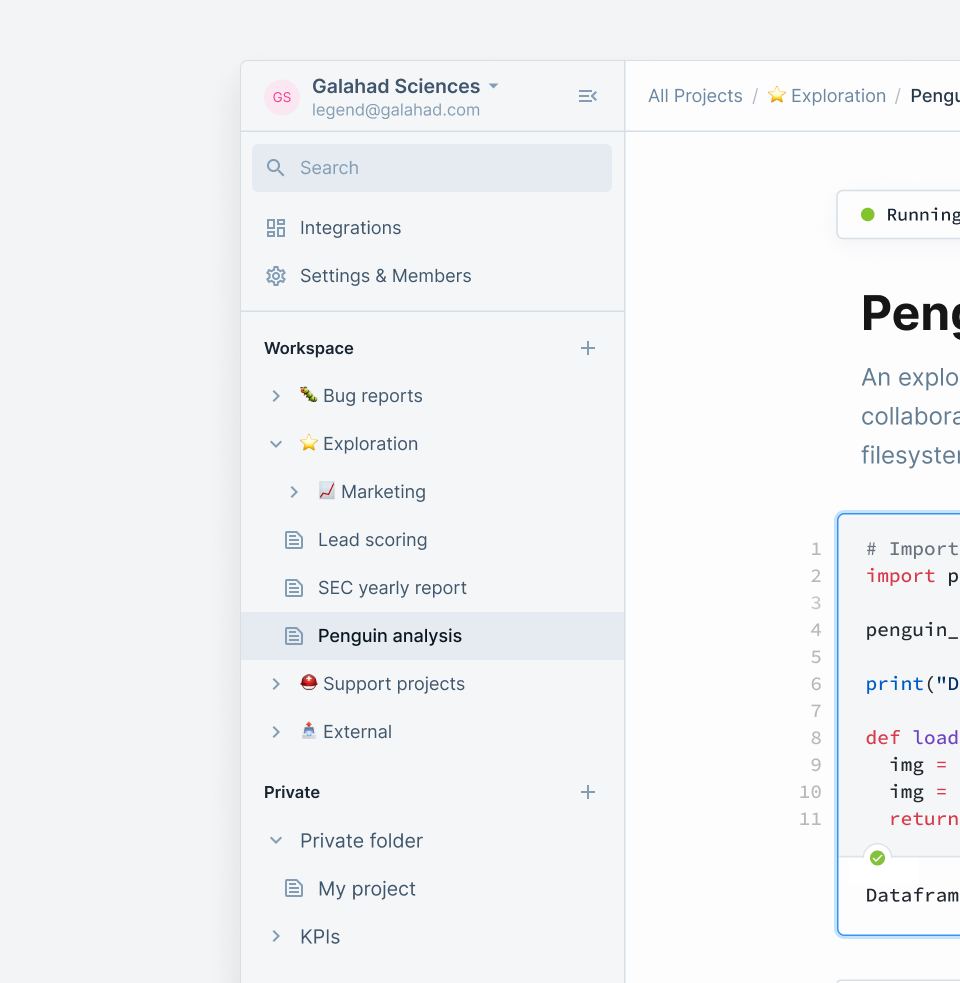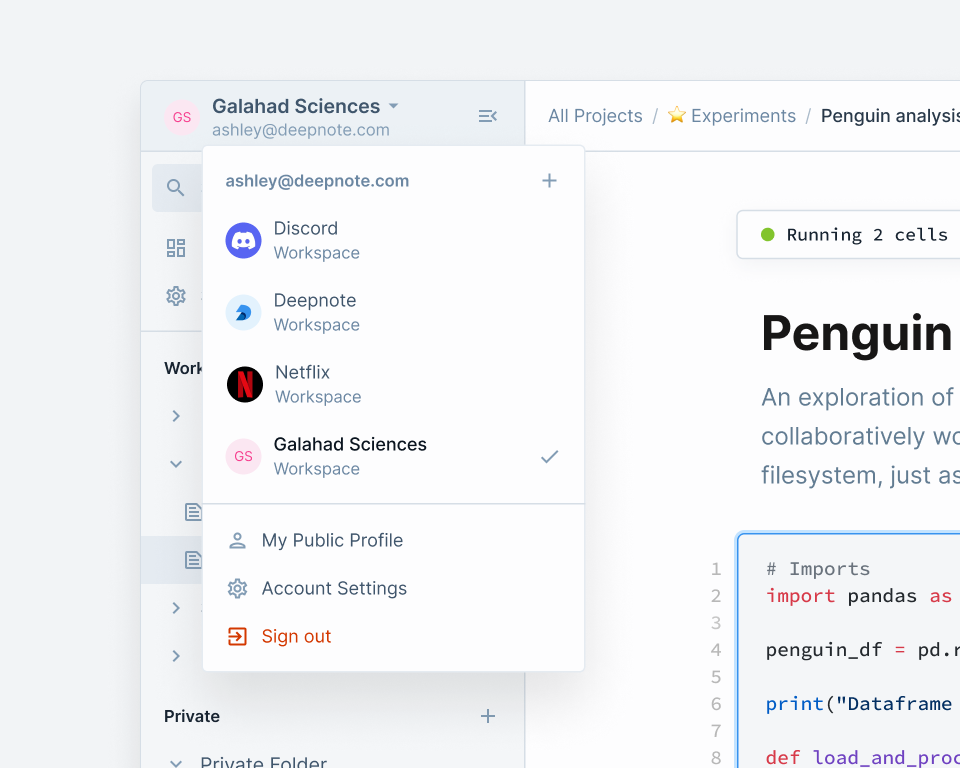Over the past couple of months, we have been heads-down working on a new experience that makes data work more transparent, impactful, and enjoyable. We are excited to present Deepnote workspaces — a collaborative space for data teams of all sizes. A workspace is your data home, and it helps you effectively organize and surface data projects, notebooks, and apps in one place, growing with you as your team and knowledge scales.
Before we jump into what’s new, let’s briefly talk about why data scientists, analysts, and other stakeholders are struggling to deliver their best in their day-to-day lives (hint: It’s not because of individuals, but because of how teams and organizations collaborate on and leverage data).
The status quo
The data ecosystem is experiencing a renaissance, resulting in the birth of the modern data stack. The tools and technologies we use are faster, more reliable, and cheaper. It’s easier to connect to your data or to scale the infrastructure as your data team grows.
The problem is that the modern data stack tells us nothing about the modern data experience. It simply illustrates how tools fit together. It leads to cold, linear models of what it’s like actually working with data on a team.

Building an enjoyable, cohesive data experience is a hard challenge. Take a group of analysts and data scientists spread across a company. Each team uses different sets of BI, analytics, or notebook tools and workflows to answer the same questions. No matter what you do, you will always end up with deltas that leave you seeking to bridge the gaps and find the reason for discrepancies in the space in between.
The biggest bottlenecks come from how organizations operate and the legacy tools they use. If you use a tool that promotes discoverability, transparency, and rapid iteration, you will see these values reflected in your team’s culture.
We shape our tools and our tools shape us. We need tools that reduce the silos between the boxes of the stack and focus on the broader experience — a streamlined, effortless way of connecting to your data, collaborating on it, and tapping into your company’s data knowledge.
Introducing workspaces
Workspaces blur the lines and get to a single source of truth. A workspace becomes your “data home,” creating and organizing what you need, the way you want — individually, together with your team, or across the whole organization. You can expand, edit, and mold it to fit your needs.
Organization as a first-class citizen
In Deepnote workspaces, your data work and the way it’s structured lives together in one space. You can instantly switch and explore other projects without losing context.
If you’ve used Deepnote before, you’ll notice a new left sidebar — it contains all your data projects. This is your team’s home. Use folders to group projects in any way that makes sense to you. The way your company is organized may inform that structure. There are several approaches we've seen for structuring folders:
- Folders by department and teams (e.g., “Growth,” “Revenue,” “Marketing”)
- Folders by purpose (e.g., “Analytics,” “Articles,” “Reports,” “Internal tools”)
- Folders by status (e.g., “Work in progress,” “Done”)
- Folders by customers or clients

Rapid prototyping & experimentation
The best notebook remains at the very core of Deepnote. Successful data teams constantly iterate on their work, fail often, and use the findings to propel them and the company forward.
Deepnote runs in the cloud, with all your work versioned, so you don’t need to worry about breaking critical workflows. You can instantly create or duplicate a notebook, connect your data, and start working. But there’s more. What if you wanted to reference or work effectively across multiple projects?
With workspaces, we've made the cross-project experience in Deepnote as seamless as possible. You can switch to a different project with just a single click or search across your whole workspace to find a specific analysis. All of this enables you to rapidly build on top of the existing work in your workspace.
Breaking through the silos
As companies grow, tooling and processes become fragmented across departments and roles. This leads to scattered information that is difficult, if not impossible, to incorporate into a single system. The resulting bottlenecks create frustration for both analysts and consumers. What if everyone could instantly tap into the power of their data workspace to get the information they need and also understand where that information came from?
Every Deepnote workspace is fully collaborative — see what colleagues are working on, join a spontaneous brainstorming session, or comment on someone’s latest findings. We are not building a tool that will stand in your way, but one that will improve and bring out the best of your data culture.

The launch and beyond
We are excited to welcome you to Deepnote workspaces. Feel free to tell us what you think! Oh, and we’re just getting started. We need your help to go even further as we continue to define the experience for all of those working with and consuming data.